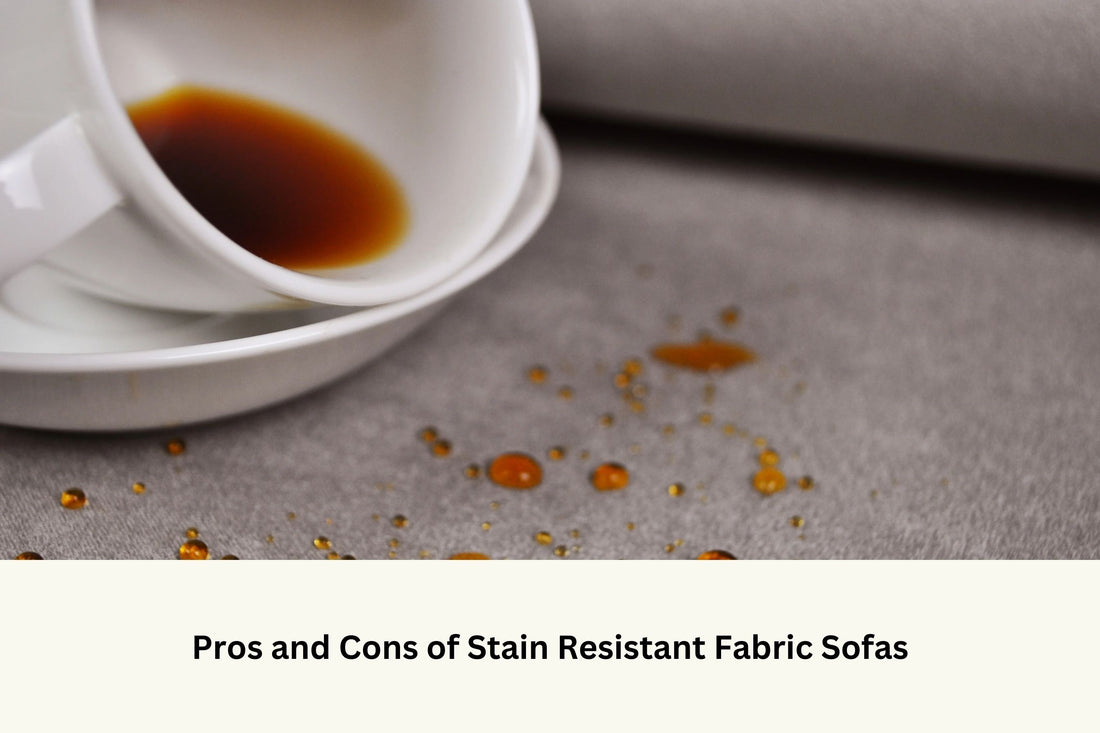
The Pros & Cons of Stain Resistant Fabric Sofas
Share
When it comes to choosing a sofa for your home, there are many factors to consider. One important consideration is whether or not to invest in a stain resistant sofa. Stain resistant sofas are designed to repel spills and stains, making them a popular choice for families with children or pets. However, like any product, stain-resistant sofas have their pros and cons. In this blog post, we will explore the advantages and disadvantages of stain resistant sofas, so you can make an informed decision for your home.

Pros of Stain Resistant Fabric Sofas
1. Easy to clean: One of the biggest advantages of stain resistant sofas is their ease of cleaning. With a simple wipe or blot, most spills and stains can be removed, keeping your sofa looking fresh and new.
2. Durability: Stain resistant sofas, if made with durable materials, can withstand everyday wear and tear. This means they are less likely to show signs of aging or damage, making them a long-lasting investment similar to other types of sofas.
3. Peace of mind: Having a stain resistant sofa can provide peace of mind, especially for families with young children or pets. You can relax and enjoy your sofa without constantly worrying about accidental spills or stains.
Cons of Stain Resistant Fabric Sofas
1. Cost: Stain resistant sofas tend to be a bit more expensive than regular sofas. The additional cost is due to the special chemical treatments used to make the fabric stain resistant. However, for Cozylant, you do not have to worry about that as we absorb stain resistance treatment costs for all our fabric sofas.
2. Chemical treatments: To make a sofa stain-resistant, it often needs to be treated with chemicals. While these treatments are generally safe, some people may have sensitivities or allergies to the chemicals used. It's important to consider this if you or your family members have sensitive skin.
3. Fabric comfort and colour: The stain resistant treatments can affect the texture and appearance of the fabric. The colour is commonly more dull and the fabric feels less soft after treatment.
4. Stain resistance durability: As the stain resistance is not a natural property of the fabric, it tends to be less durable than the fabric material itself and normally tends to wear off after 2 years. Post that, you would need to re-apply the stain resistance chemical to keep its stain resistance effect.
Ultimately, the decision to invest in a stain resistant sofa depends on your personal preferences and lifestyle. If you have a busy household with children or pets, the benefits of a stain resistant sofa may outweigh the potential drawbacks. However, if you value more vibrant colours or fabric's comfort to touch, a regular sofa may be a more suitable choice. Consider your needs and priorities, and make a decision that aligns with your lifestyle and budget.
Last updated: 30th November 2023
